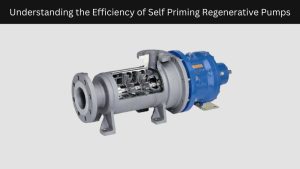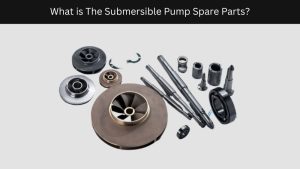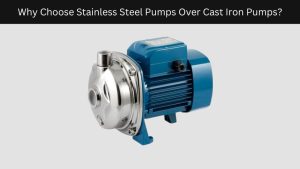Solar submersible pumps have revolutionized how water is extracted in remote, off-grid, and energy-conscious environments. By harnessing solar energy, these systems eliminate the need for conventional electric or diesel power sources, making them an environmentally friendly and cost-effective solution.
To fully appreciate their functionality and efficiency, it’s essential to understand the various components that make up a solar submersible pump system. Each part plays a critical role in converting solar energy into mechanical energy, which is then used to pump water from underground sources.
This blog breaks down each major component, explaining its function, role, and importance in the overall performance of solar submersible pumps.
1. Solar Panels (Photovoltaic Modules)
The first and most vital component in any solar submersible system is the solar panel array. These panels capture sunlight and convert it into direct current (DC) electricity using photovoltaic cells.
Key Details:
- Typically made of monocrystalline or polycrystalline silicon.
- The power output (in watts) depends on size and efficiency.
- The number of panels needed is based on the pump’s power requirement and daily sunlight availability.
- Must be installed at the correct angle and orientation for maximum exposure.
The solar panels directly power the pump or charge a battery bank for later use, depending on the system design.
2. Submersible Pump
This is the core mechanical component responsible for drawing water from underground sources and pushing it to the surface. Unlike surface pumps, submersible pumps are placed underwater, usually inside borewells or deep wells.
Key Details:
- Comprised of a motor and a pump body (impeller or screw-type).
- Available in various capacities (measured in HP or kW).
- Constructed with corrosion-resistant materials such as stainless steel.
- Operates more efficiently under water due to cooling by the pumped fluid.
The type of submersible pump—centrifugal or helical rotor—is chosen based on the application (e.g., irrigation, drinking water supply, livestock).
3. Pump Controller (MPPT or VFD Controller)
The pump controller is the brain of the solar submersible pump system. It manages the flow of electricity between the solar panels and the pump, ensuring stable operation.
Key Functions:
- MPPT (Maximum Power Point Tracking): Maximises the efficiency of solar panel output under varying sunlight conditions.
- Overload Protection: Prevents damage due to overcurrent or voltage spikes.
- Dry Run Protection: Automatically shuts off the pump if water levels drop too low.
- Soft Start Feature: Prevents sudden surges in current that could damage the motor.
Without a proper controller, the pump can become inefficient or even fail due to unstable power input.
4. Motor (AC or DC)
The motor drives the pump mechanism and is submerged along with the pump body. Depending on the system configuration, the motor can be:
- DC Motor: Directly powered by solar panels. Simple and efficient for low-head applications.
- AC Motor: Requires an inverter to convert DC power from solar panels into AC. Suitable for high-power and large-volume water needs.
Key Specifications to Consider:
- Voltage and power rating
- Motor efficiency
- Operating speed (RPM)
- Thermal protection features
Selecting the right motor type ensures compatibility with your solar panels and water requirements.
5. Inverter (If Using an AC Motor)
An inverter is necessary when your solar submersible pump uses an AC motor. It converts the DC power generated by the solar panels into AC power suitable for running the motor.
Important Features:
- Pure sine wave output to match utility grid standards
- Built-in protection against overheating and voltage fluctuation
- Should be matched to motor power (in watts/kW)
Some advanced inverters come integrated with MPPT controllers for greater system efficiency.
6. Mounting Structure for Solar Panels
Mounting structures are frames that securely hold the solar panels in place. While they may seem secondary, their role is crucial for ensuring panel stability and optimal sun exposure.
Types:
- Fixed tilt structures
- Adjustable tilt structures (manual or automatic)
- Ground-mounted or roof-mounted
Using galvanized steel or aluminium helps prevent corrosion and extend service life.
7. Cables and Wiring
Electrical wiring connects all components of the system panels, controller, motor, and inverter. Using high-quality cables with proper insulation and weather resistance is critical.
Specifications to Look For:
- UV-resistant and waterproof jackets
- Correct gauge to handle load without voltage drop
- Proper grounding to avoid electrical faults
Neglecting wiring quality can lead to power losses, safety issues, and premature equipment failure.
8. Water Pipes and Fittings
Pipes are used to deliver the pumped water to its destination, whether it’s a storage tank, irrigation channel, or home water system.
Material Choices:
- HDPE or PVC for lightweight and cost-effectiveness
- Stainless steel for high-pressure and durability
Ensure correct sizing to match the pump’s flow rate to avoid back pressure or leakage.
9. Battery Bank (Optional)
For systems requiring water during cloudy days or at night, a battery bank is added to store excess solar energy.
Battery Types:
- Lead-acid (cost-effective but heavy)
- Lithium-ion (longer life and faster charging)
This component is not always required but adds flexibility and continuous operation capability to solar submersible pumps.
10. Float Switch or Water Level Sensor
These components automate the pump operation based on water level. A float switch inside the tank can stop the pump when full, while a sensor in the well can prevent dry running.
Benefits:
- Prevents water overflow or wastage
- Enhances motor protection and lifespan
- Reduces manual intervention
They are inexpensive but highly effective additions to the overall setup.
Conclusion
Understanding each component of a solar submersible pump system helps in making informed decisions for purchase, installation, and maintenance. From solar panels to controllers, motors, and inverters, each part has a specific function that contributes to efficient water pumping.
Whether you’re looking to irrigate fields, provide drinking water in off-grid locations, or replace energy-intensive systems, solar submersible pumps offer a sustainable and cost-effective solution. Knowing what goes into these systems not only helps you choose the right equipment but also ensures optimal performance over time.
With the increasing focus on renewable energy and water conservation, investing in a well-designed solar submersible system is both environmentally responsible and economically viable.






